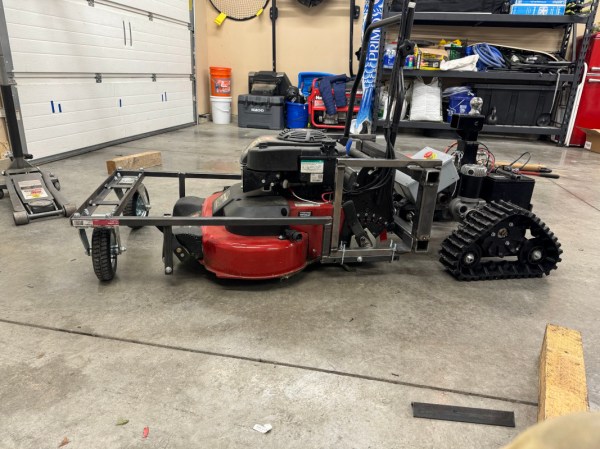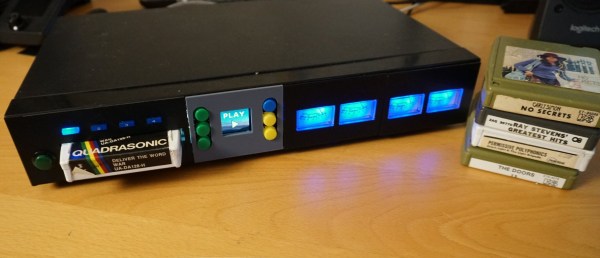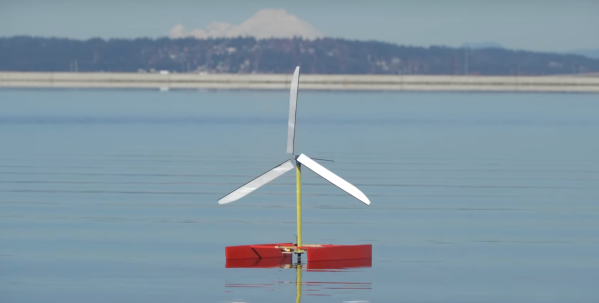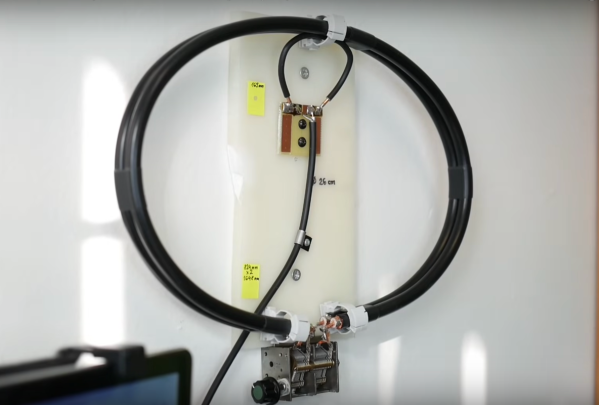Although there’s been considerable excitement over the past half century of a Jetsons-like robotic future, outside of a few niche uses of our day-to-day lives there hasn’t been much in the way of robotic assistants coming to ease our physical household workloads. Sure, robots exist in manufacturing and other industrial settings, but the vast majority of us won’t see a robotic revolution unless we make it for ourselves. To that end, [Jim] has begun construction of a robot that can at least mow his lawn and eventually plow his driveway, among other potential tasks.
The robot, called the Lawny Five, is a tracked vehicle currently under remote control but with a planned autonomous capability. The frame includes a set of caster wheels at the front to take advantage of the differential steering of the tracks, and between everything is where the mower, plow, or other tool can sit. The attachment system is based on a 2″ receiver hitch, allowing the robot to eventually change tools at will while still preserving the usefulness of the tools in their original state. The robotic platform has been tested with the mower on a wet lawn with a 20° slope and showed no signs of struggle (and didn’t damage the grass) so it’s ready to take on more challenging tasks now as well.
With the core of the build out of the way, [Jim] is well on his way to a robotic lawnmower and potentially even an autonomous one, not to mention one with interchangeable tools that he hopes will be put to work in other ways like parking his boat in a small space by his house. For those maintaining a piece of land a little more involved than suburban turfgrass, there are other robotic platforms capable of helping out farmers with things like planting, watering, and weeding.

















